There are many types of flukes in fish, but three main types of flukes are common in fish: monogeneans, cestodes, and trematodes.
All three of these parasites can cause disease in fish, they also have different symptoms and treatments.
Monogeneans are the smallest and least harmful external parasites on fish, while cestodes and trematodes can be more destructive internal parasites of fish.
The article explained different types of fish flukes and their anatomy, causing symptoms, life cycle, and treatment as well as different fish flukes pictures.
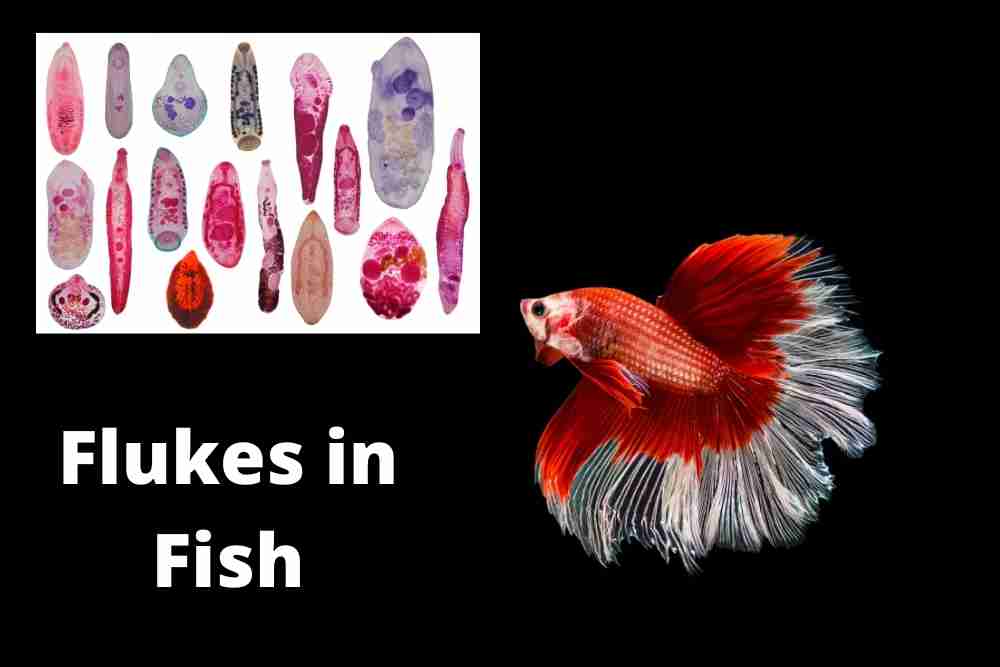
What Are Fish Flukes
Do fish have flukes? is a common query for fish lovers. These are parasites that live on the skin, gills or gut content of fish.
They use hooks and sucker-like structures to attach themselves to the host and They cause harm to the fish if they are present in large numbers.
They lay eggs and release larvae into the surrounding environment. They are very common in many fish species.
The monogenetic trematode genera Gyrodactylus sp and Dactylogyrus sp are common parasites of the gills and fins of fish.
Under high-density culture conditions, a heavy infestation can develop, which results in mortality due to these parasites.
Raising water temperature and poor water quality increases the frequency of infection.
Types of Fish Flukes

There are different types of fish flukes, including the skin, gill, eye, and liver flukes.
Fish with flukes create problems in fish production and rearing pet fish.
The skin fluke is a flatworm-like parasite that lives on the skin of fish. The gill fluke is a parasitic flatworm that lives in the gills of fish.
Types of Monogenean Parasitic Fluke
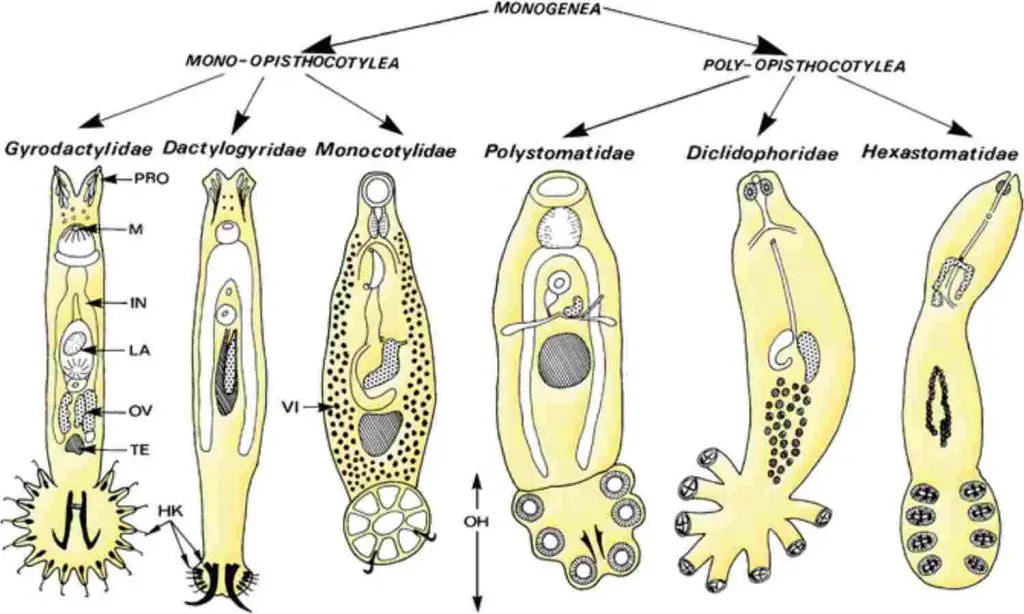
Basically, four types of flukes are observed in fish under different groups and families.
- Skin fluke
- Gill fluke
- Liver fluke
- Eye fluke
Those four types of flukes are described below,
Skin Flukes On Fish
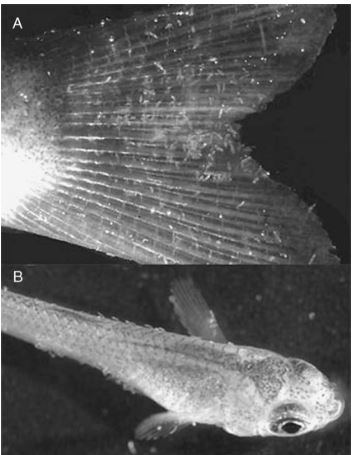
Skin flukes are parasitic flatworms that infect fish. There are two species of skin flukes that commonly infect fishes, Gyrodactylus salaris and Gyrodactylus elegans.
But how does skin fluke take nutrients from the fish body (skin)?
The flukes use their posterior attachment organ opisthaptor to attach to fish skin and then inject enzymes into the host’s blood vessel, which breaks down tissue and creates a hole in the artery walls. This process allows the parasite to feed on the host’s blood.
They are common viviparous monogenean parasites and are mostly found on body surfaces, fins, and skin of teleost fishes.
Anatomy Of Skin Flukes In Fish
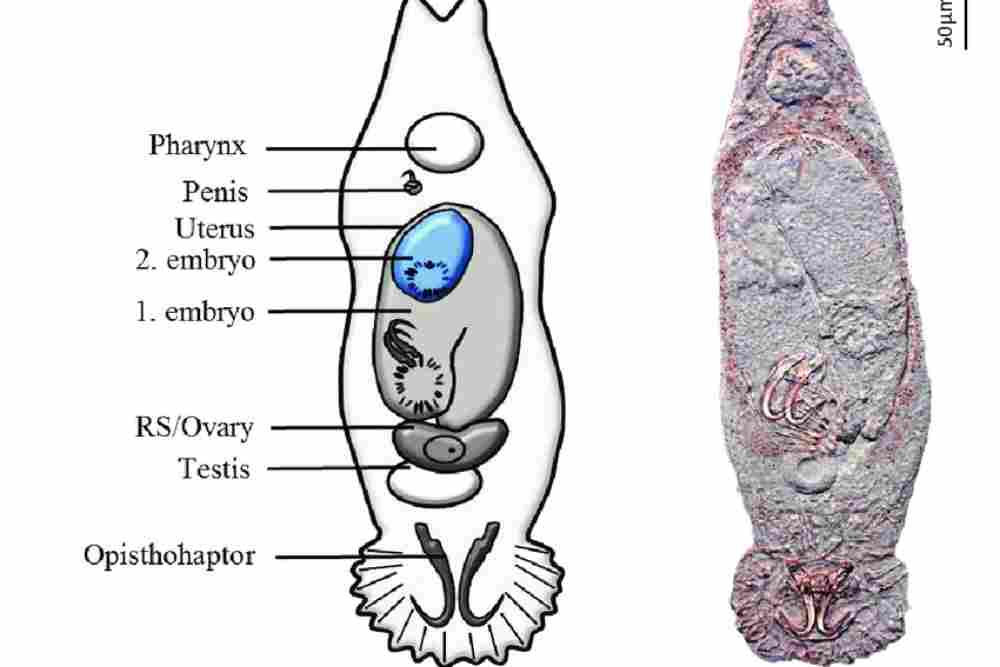
There are two cephalic lobes in the anterior position. The oral opening is ventral and associated with a muscular pharynx.
The intestinal caeca are simple and end blindly.
The haptor has numerous peripherally located marginal hooks and a pair of ventrally directed hamuli.
A tubular, posteriorly confluent intestine is present in some flukes.
Life Cycle of Skin Fluke
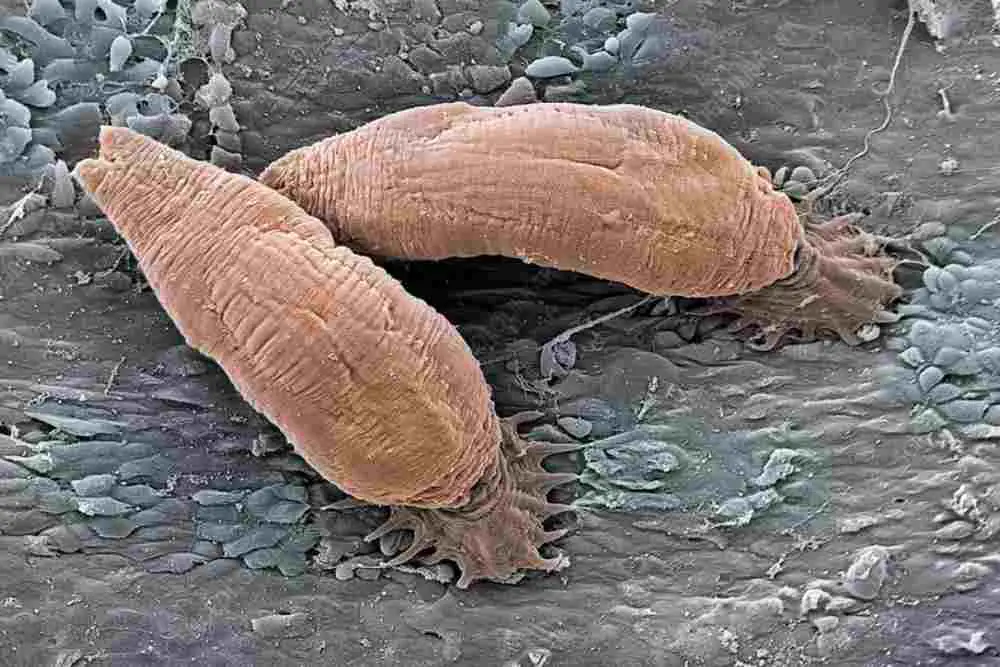
The life cycle of these parasites involves a fish swallowing a parasitic larva that has dropped off another fish.
The larva then travels through the fish’s digestive system and enters its skin where it develops into a juvenile worm.
After several weeks, the worm leaves the fish’s skin and swims to another host, such as a frog or crayfish, where it completes its life cycle.
Adult flukes live on fish skin as parasites. As they feed on fish, they reside for 12-15 days at approximately 15-20 °C.
Newly born flukes need to be on or near a fish within 48 hours of birth to live. The hermaphrodite adults produce live young one at a time.
Within one day of birth, these young reproduce themselves and then every 5-10 days.
The first young are born so soon because they began to develop when their parent was inside their grandparent’s womb.
A typical skin fluke (Gyrodactylus) will develop over 2,000 in 30 days.
Signs & Symptoms of Skin/Body Fluke On Fish
-The colors of the infected fish fade and the victim grow very pale the fins droop and fold.
–The skin becomes more slimy than normal and appears with small blood spots.
-Increased breathing, inflamed gills, excessive mucous secretions, and accelerated respiration.
Gill Flukes in Fish

Dactylogyrus species is commonly known as gill fluke. These parasites in fish belong to a genus of monogeneans in the Dactylogyridae family.
What Causes Gill Flukes in Fish
Like other monogeneans, species of Dactylogyrus have only one host in order to complete their life cycle. There are many varieties of gill flukes to be found on fish.
Life Cycle of Fish Gill Flukes

The life cycle of Dactylogyrus species is direct, with no intermediary host.
The hermaphroditic adults are oviparous and lay eggs in the water which hatch and attach themselves to the fish gills, turning oncomiracidium.
Adult Dactylogyrus lays eggs over 4 to 10 days. After the eggs hatch, water currents support the free-swimming ciliated larva in reaching its host.
When eggs are released into the water and hatch within 4 days at 20°C, the free-swimming ciliated larva then is required to find their host within 6 to 8 hours in order to live.
Time is necessary for egg development into the adult form to be temperature-dependent.
Hydrothermal conditions in the range of 72 to 75 °F enable the development cycle to be complete within a week, whereas concretes in the area of 34 to 36 extend the life cycle to five to six months.
Signs & Symptoms of Gill Fluke
-Gills become very pale.
-Gills that are infested with fluke gape for water breathing, their gill membrane being stretched out widely.
-The affected fish swims closer to the surface, jerks its tail, becomes lethargic, and stops eating.
Fish Liver Flukes
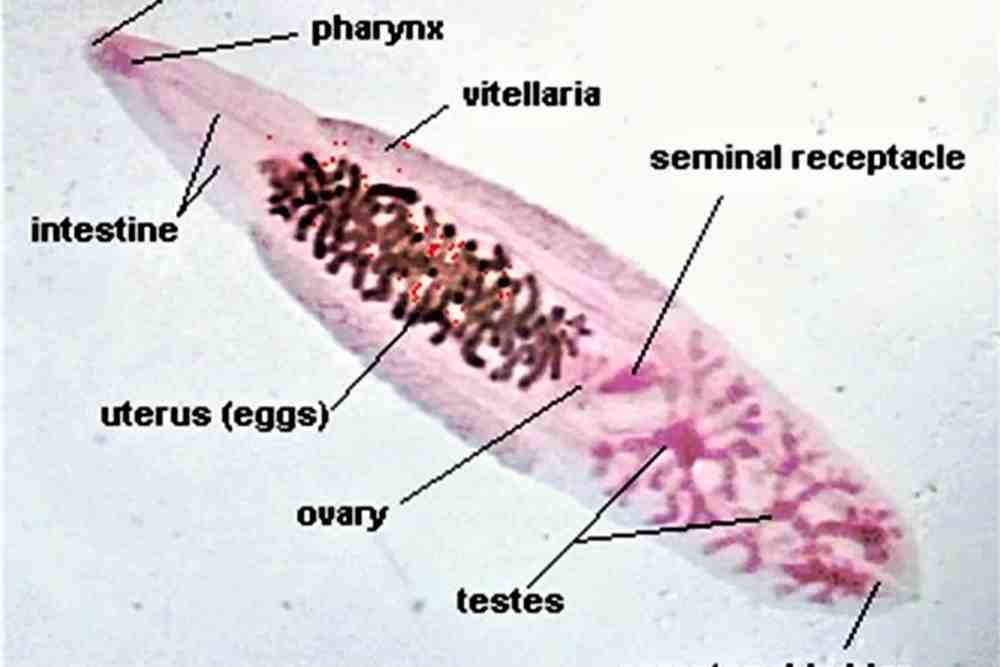
Liver fluke is a parasitic flatworm that can be found in both freshwater and marine fish.
These parasites can cause significant health problems in infected fish, including death.
Liver fluke is most commonly found in warm-water fish, such as bass, but has also been reported in salmon, trout, and tilapia.
In some cases, liver fluke can spread to humans who eat infected fish.
Life Cycle of Fish Liver Flukes
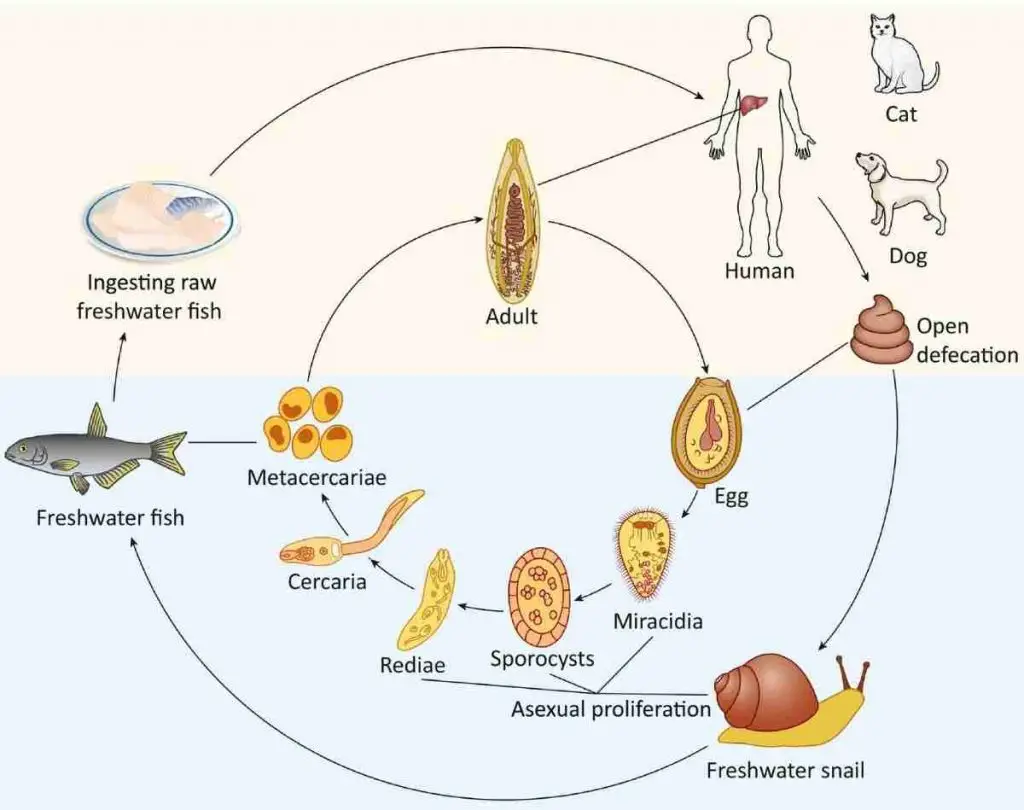
An embryonated-shell Clonorchis sinensis egg is discharged in the bile ducts and the stool. An adult langoustine intermediate snail ingests the egg.
After being digested, the miracidia of the egg are released, which go through a succession of developmental stages (sporocysts, rediae, and cercariae).
The cercariae are released from the snail and, after a short time in its mesentery, will begin to metamorphose into cercariae.
The parasite metacercariae encounter and destroy the body of freshwater fish, after which it encysts in the intestine as a cysticercid.
Infection of humans occurs through the consumption of undercooked, salted, pickled, or smoked freshwater fish.
As metacercariae come into contact with the intestine, they encyst in malt organs or common bile ducts. Fish flukes in human is a major concern also.
Development usually takes about a month. Flukes measuring 10 to 25 mm long and 3 to 5 mm wide inhabit small to medium-sized bile ducts.
The elevated temperature of the water and poor water quality encourage parasite populations and treatment is frequently necessary to maintain high fish population levels.
Signs & Symptoms of Fish Liver Fluke Infection
-Fish fluke infections may also lead to lesions in the liver of the fish and can be difficult to diagnose.
Eye Fluke in Fish
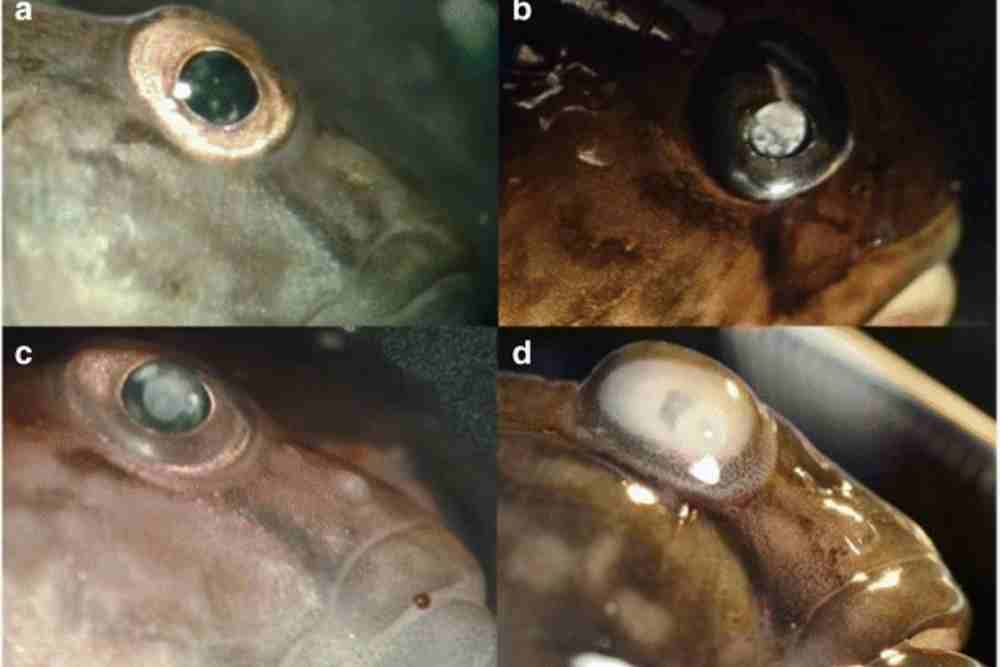
There are many types of fluke parasites in fish and they can be very unpleasant. One type of fluke is the eye fluke, which is a parasite that lives in the eyes of fish.
Some fish have large, flesh-covered flukes that can easily be seen when they are swimming around.
These flukes often protrude from the fish’s head and can cause discomfort to the consumer.
Life Cycle of Fish Eye Fluke

Microscopic eggs are released from parasites such as tapeworms once ingested by fish-eating birds such as gulls. Continued asexual reproduction in the animal intestine gives rise to a large number of miracidia
Cercariae that have developed from miracidia infect freshwater snails.
These snails then reproduce sexually, giving rise to hundreds of thousands of cercariae.
An infection by cercaria-laced freshwater snails attacks by proxy in the fish’s intestine leading to the development of metacercariae.
The final stage of the bacterium’s life cycle is achieved when fish eaten by birds.
Symptoms of Eye Fluke Infection
-The eye fluke can cause blindness in fish and it is important to be aware of it so you can keep your fish healthy.
-Completely white lenses sometimes dislocated or even completely erupted were
-Eye cataracts were observed.
How to Treat & Cure Fish Flukes (Gill Fluke, Skin luke, Eye Fluke & Liver Fluke)
Flukes in saltwater fish and freshwater fish are common. A number of treatments for flukes in fish are used to remove trematodes from fish, but formalin and organophosphate, trichlorfon, are used most widely.
-Formalin is effective but, as it is toxic to fish at high temperatures, it is used primarily on cold water species.
-Trichlorfon (dimethyl (2, 2, 2-trichloro-1-hydroxyethyl) phosphate) is a relatively safe pesticide and is the most recommended treatment for warm water fish species (trematode).
However, the FDA approves trichlorfon only for nonfood fishes. This chemical has been widely used to treat trematode infestations in pet fish.
It’s widely believed that the new recommended level of trichlorfon exposure has been determined as 0.25 mg 1-1.
-Mebendazole is widely recognized for treating nematode and cestode infestations of animals, both inside and out.
-Common salt is a favorite chemical for a parasite used for aquatic therapy. 2% salt is effective for curing light issues in water. Treatment of the aquarium wastewater requires 20 to 50 ppm of salt; baths repeat two times per week for 3 days.
-Malachite green can be sprayed in a pond to give a dose of 0.15 ppm, the treatment must be repeated for three days.
-Potassium permanganate baths were effective at 2 ppm and 3-5 ppm, single application.
Ammonium hydroxide can also be used for 5-15 minutes at a dose of 500 ppm.
Prevention of Fish Flukes
-To prevent infection, ponds in an area of fry or juvenile fish should be disinfected after draining them.
They should be dried up and the bottom treated. After drying, the bottom should be treated with quick lime at 2 kg per hectare.
-Another method of disinfection is to add methylene blue to the pond water at 1 g 10 cubic meters.
-Prevention of the contamination of food products with parasitic stages (metacercariae).
Contamination of fish and shellfish is largely controlled by controlling surface waters the fish is caught in, hygienic aquaculture, and preventing the infestation of its first intermediate hosts (snails).
-Fish ponds require wastewater to be treated in order to avoid polluting them with muck and other waste.
–Biological control measures (if safe and effective) are not recommended. Remove intermediate host
Marine Fish Flukes
Marine fish flukes are a type of parasitic flatworm. They are found in the external skin, gill, and gastrointestinal tracts of marine fish and can cause serious health problems.
The parasites can invade the body through the mouth, nose, or eyes and cause serious illness. Marine fish flukes are easily identified by their distinctive shape and color.
Flukes in Aquarium Fish
Flukes in fish tanks are a common problem in aquariums. They can cause severe damage to fish and other aquatic creatures.
Fish flukes are very small creatures that live in the intestines of certain fish species. They can reproduce quickly and cause serious problems for your aquarium inhabitants.
Fish Flukes in Pond
If you have a pond, it’s important to keep an eye on your fish flukes to make sure they don’t get out of control.
If you see any signs of illness or death among your fish, it’s best to take them off of the pond completely or treat the water with a parasite killer to get rid of the fish flukes.

4 thoughts on “Flukes In Fish (Causes, Symptoms & Treatment)”
Comments are closed.